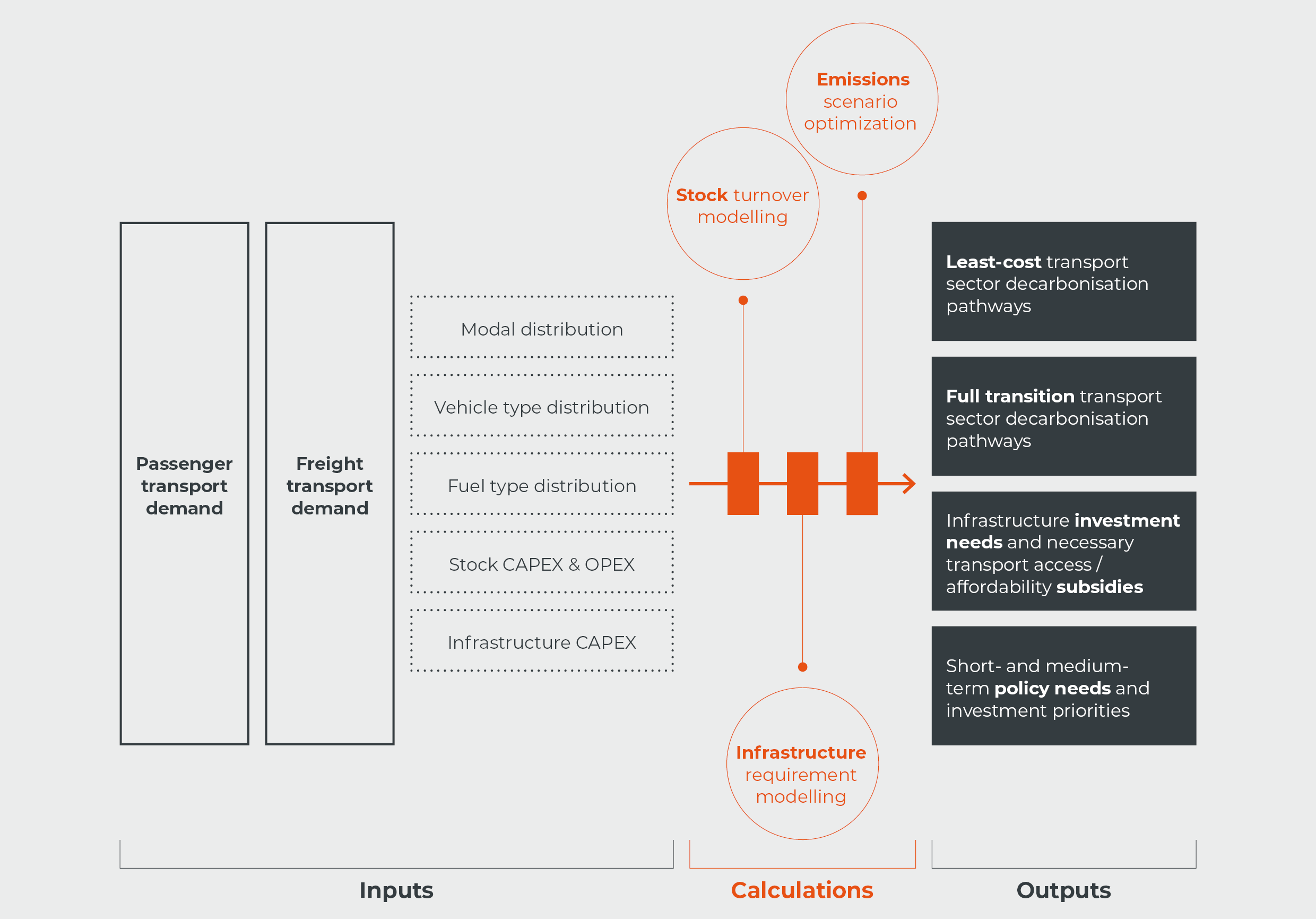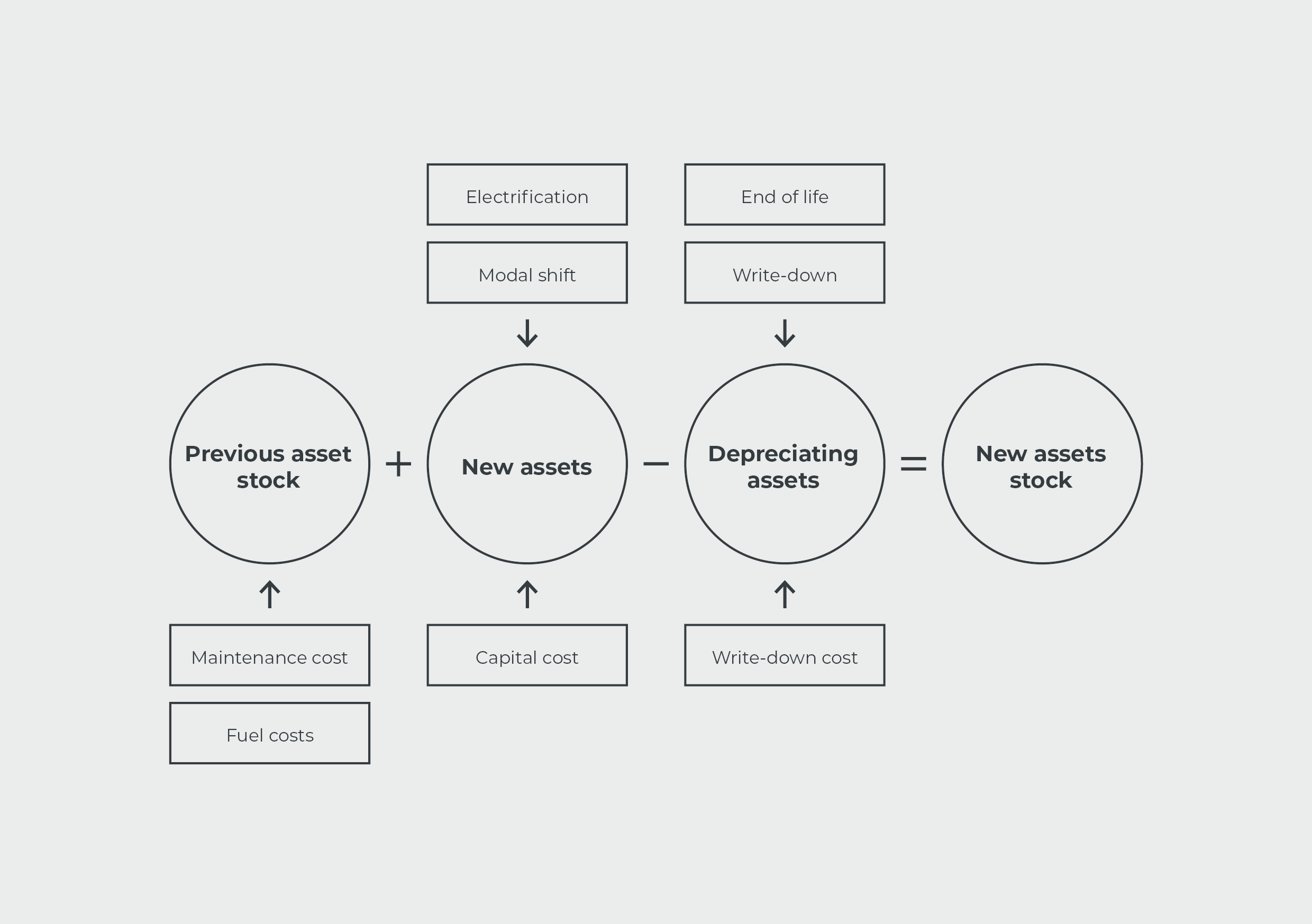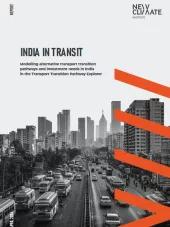The TTPE is a bottom-up transport transition pathway model that covers road transport, non-motorized transport, railway transport, as well as water and air transport. The TTPE models stock turnover, emissions, total cost of ownership (TCO) for both public and private vehicles, as well as infrastructure requirements and investment needs up to 2050.

The TTPE can be used to derive optimized or custom pathways for the transport sector. For example, TTPE can be used to derive least-cost pathways, for which TTPE uses an optimization algorithm to minimize public expenditure or total system costs. For more ambitious transition pathways, the TTPE uses an optimization algorithm to minimize emissions by 2050.
The core module of the TTPE is its stock-turnover model. It explicitly estimates previous stock, new assets as the result of electrification or modal shift, as well as depreciating assets as a result of the end of the economic lifetime or premature write-downs. The explicit evaluation of stock turnover allows for tracking the evolution of total cost of operation of stock over time. The evolution of stock triggers additional infrastructure needs, specific to each transport mode. TTPE models infrastructure investment requirements based on assumptions on infrastructure usage shares, infrastructure utilization and load factors, as well as infrastructure CAPEX per km.
For all pathways developed in the TTPE, the optimization problem is bounded by exogenously set feasibility constraints (these can be derived from literature and expert judgment or through workshops with stakeholders). These bounds are minimum or maximum values that variables can take to avoid unrealistic outcomes.
The TTPE was developed with support from the Climate Works Foundation and initially applied to assess transport sector transition pathways in India.
The tool is available for download upon request.






